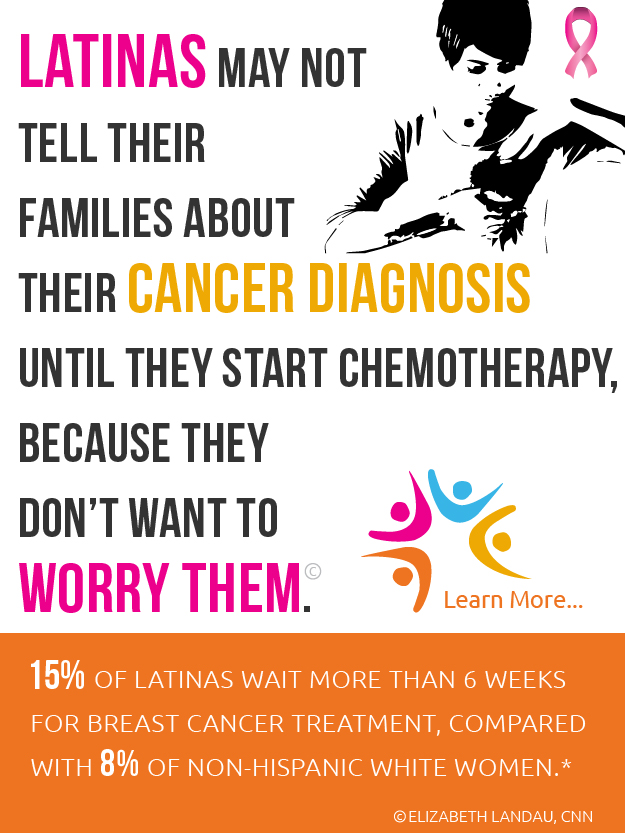
14 of the Most Common Autoimmune Diseases You Simply Must Know
09/26/2018 06:00AM | 5361 viewsBy Lauren Weiler
Whether you realize it or not, your immune system does some seriously heavy lifting. It has the vital job of protecting you from disease, fighting pathogens, and making sure you wake up the next morning feeling just as good as the day before. Sure, you’ve been sidelined by the flu before, but without your immune system, it’d be tough to survive at all.
Unfortunately, not everyone’s immune system does the job it’s meant to. Those with autoimmune disorders have overactive systems that end up mistaking the body’s healthy tissue for an invading sickness. WebMD explains the body basically attacks itself, causing a wealth of issues. And believe it or not, autoimmune diseases are quite common. The American Autoimmune Related Diseases Association says one in five people in the U.S. has one of these disorders. Here are the 14 most common ones you should really be aware of.
1. Graves’ disease
Your thyroid is responsible for keeping your metabolism humming along. For those with Graves’ disease, the immune system releases antibodies that stimulate the thyroid, shifting it right into high gear. This can cause weight loss, tremors, and sweating, explains WebMD. These are all signs the gland is working way too hard.
You might think the weight loss part of this disease doesn’t sound too bad, but the eye complications that can occur are really troubling. Some people with Graves’ experience a condition that causes their eyes to protrude out of the sockets. Luckily it’s not all negative — there are anti-thyroid agents available for people with the disease.
2. Rheumatoid arthritis
You might already know rheumatoid arthritis damages your joints, but the disease doesn’t just stop there — it can even damage your eyes, skin, or heart, Mayo Clinic says. Because this disease causes a lot of inflammation, it’s usually recommended you take anti-inflammatory drugs or even steroids to halt the joint degeneration in its tracks. For those with a severe case, surgery may be the best option.
3. Lupus
Even famous actors are joining in walks to end lupus. | Angela Weiss/Getty Images for Lupus Foundation of America
This autoimmune disease typically affects women — quite a few of them. The Lupus Foundation of America estimates 1.5 million Americans are living with lupus right now, with about 16,000 new cases per year. To make matters worse, it can take years to correctly diagnose lupus because it’s a chronic disease that can damage any part of the body. It can even look like rheumatoid arthritis, thyroid problems, or diabetes, giving it the name “the great imitator.”
Symptoms can include a rash across the cheeks and nose, anemia, swelling in the limbs, or hair loss, but these are also signs of many other diseases. It’s important to get lupus treated to avoid life-threatening complications.
4. Crohn’s disease
Crohn’s is a very serious digestive disease. | iStock.com/Nikodash
Irritable bowel disease is quite common — approximately 1.6 million Americans have a diagnosis, says the Crohn’s and Colitis Foundation of America. This particular chronic autoimmune condition causes inflammation anywhere in your digestive tract, the National Institute of Diabetes and Digestive Kidney Diseases explains. Doctors aren’t sure why Crohn’s develops in some folks and not others. But the symptoms can be quite serious, ranging from intense abdominal cramping to diarrhea and severe weight loss.
If you have Crohn’s, the best thing you can do is decrease the inflammation in your intestines to help control your flare-ups. Your diet can really help here, as can medications or even surgery recommended by your doctor.
5. Multiple sclerosis
You’ve heard of multiple sclerosis, and you’re also probably familiar with just how debilitating this disease can be. The National Multiple Sclerosis Society explains MS occurs when your immune system attacks your central nervous system: the brain, spinal cord, and optic nerves. So, it’s no mystery how severely this disease can impact your life. Multiple tests are required for a diagnosis and the symptoms can be common such as muscle spasms, problems with vision and bladder, and changes in your brain function. As of now, there’s no cure, but long-term remission is possible with a combination of medication and rehab.
6. Type 1 diabetes
We know how to avoid type 2 diabetes by now — maintain a healthy weight, stick to a nutritious diet, and don’t forget to exercise. Those with type 1, however, don’t get much of a say. The U.S. National Library of Medicine says you’re born with this autoimmune disease, and it occurs when your body can’t produce insulin, the hormone that lets your body use sugar. Without insulin, you’d be hard-pressed to have enough energy to do anything.
This disease typically develops in children and teens, though in some cases it can affect older adults. There’s no magic cure for type 1 diabetes, but it can be successfully managed by injecting insulin daily. And if you have type 1, you’re not alone — 1.25 million Americans are living with it currently.
7. Hashimoto’s disease
The American Thyroid Association says this thyroid disorder is even more prevalent than Graves’, and it’s the most common reason for an underactive thyroid. Your immune system attacks the thyroid gland, leading to chronic inflammation and impaired function.
At first, this disease can be very hard to detect — the symptoms can take years to notice. But over time, the thyroid can become enlarged because of cell damage, and other indicators of hypothyroidism like weight gain and fatigue are usually noticeable. Lab tests can be performed to verify Hashimoto’s is the issue, and many people don’t even require treatment if their symptoms are mild.
8. Polymyalgia rheumatica
Perhaps not the most well-known on the list, polymyalgia rheumatica will affect 59 out of every 100,000 people over the age of 50, says the Vasculitis Foundation. This autoimmune condition occurs when your system primarily attacks the joints in your shoulders and hips, though your arteries and aorta can also be affected. Those under the age of 50 don’t have much to worry about, but those who do have it should expect a lot of stiffness in the shoulders, hips, and neck, as well as difficulty raising their arms above their head.
Here’s the good news — this one’s very treatable. Corticosteroids are very effecting in decreasing this type of inflammation.
9. Psoriasis
Psoriasis might just look like a small, treatable rash, but it’s actually an indicator of an overactive immune system. The National Psoriasis Foundation says the most common type, plaque psoriasis, looks like red, raised patches of skin that are typically seen on the scalp, knees, elbows, or lower back. The affected skin itself might just seem like a nuisance, but beware — if you do have this condition, you’re at an elevated risk for other chronic health conditions like psoriatic arthritis, heart disease, and even some cancers. Luckily, there are a lot of treatment options, including oral and topical choices.
10. Celiac disease
We know the gluten-free trend has taken the health world by storm, but some people really benefit from it more than others. If you have Celiac disease, ingesting gluten causes your body to attack and damage the small intestine, the Celiac Disease Foundation explains. What’s particularly worrying is just how many people have this condition and don’t know. Abdominal pain, digestive issues, and anemia are all common symptoms, but the foundation still thinks about 2.5 million Americans have undiagnosed Celiac. Without treatment, this can lead to type 1 diabetes, MS, infertility, or neurological problems.
11. Sjögren’s syndrome
This disorder often accompanies other autoimmune diseases like lupus and rheumatoid arthritis. The most notable symptoms are excessively dry eyes and mouth, though the Sjögren’s Syndrome Foundation explains it can also affect your major organs and central nervous system. Unfortunately, ladies really need to pay attention to these symptoms — there are currently about 4 million Americans with this disease, and nine out of 10 are women.
Some people only experience mild discomfort, but for others, the symptoms can be severely limiting. Products for dryness can be purchased over the counter, but medications are also typically given when this syndrome starts to affect internal organs.
12. Autoimmune hepatitis
When you have autoimmune hepatitis, your immune system attacks your liver, resulting in inflammation. Some forms of hepatitis can be cured, but the American Liver Foundation explains this one is a chronic disease that has no permanent fix. The symptoms of this condition can be minor, but when you may notice jaundice, dark urine, or discomfort in your abs. And this autoimmune disease typically happens quickly, without warning. Medications can help slow liver damage, but there’s still no cure.
13. Vitiligo
Here’s another autoimmune skin condition, but it’s the pigment of the skin that’s affected this time. Medical News Today explains this chronic disease causes the body to destroy the cells that produce skin pigment, leaving behind white marks. Though it’s most noticeable on people of color, vitiligo can affect anyone. Right now there’s no cure, but for many, that’s not a problem — it’s becoming more widely recognized, even in the fashion world. And Vitiligo Support International notes over 50 million people have it, so it’s not all that uncommon, either.
14. Alopecia
Many women can’t imagine life without their long, luscious locks. But for those with alopecia, hair loss is an everyday problem. WebMD explains this autoimmune disease occurs when your body attacks your hair follicles. The damage isn’t permanent, but it can still result in bald spots, thinning hair, or hair breakage. And it doesn’t just occur on the scalp — you may notice patches of hairless skin on your body, too.
For those who experience patches of hair loss, there is the option of getting injections of corticosteroids into your scalp every month or so. There are also topical treatments available to help the hair grow. Otherwise, depending on how severe it is, you may wish to wait until the hair grows back and work with what you have in the meantime.
How to get a correct diagnosis
Here are a few tips on how to get the most accurate diagnosis. | iStock.com
Since many of these disorders have similar symptoms, The Autoimmune Diseases Association has a few recommendations on ways you can help your doctor narrow it down.
First, know that autoimmune diseases are a lot more prevalent in women than in men, and they often run in families. If you have multiple family members with different autoimmune diseases, this increases the likelihood that you’ll develop one, even if it’s not the same disorder they have. Also, keep a checklist of your symptoms so you can monitor how you’re feeling. It also doesn’t hurt to get multiple opinions. One doctor may know it all, but odds are you’ll get a more accurate picture of what’s going on if you seek out multiple specialists.











Post your Comment
Please login or sign up to comment
Comments